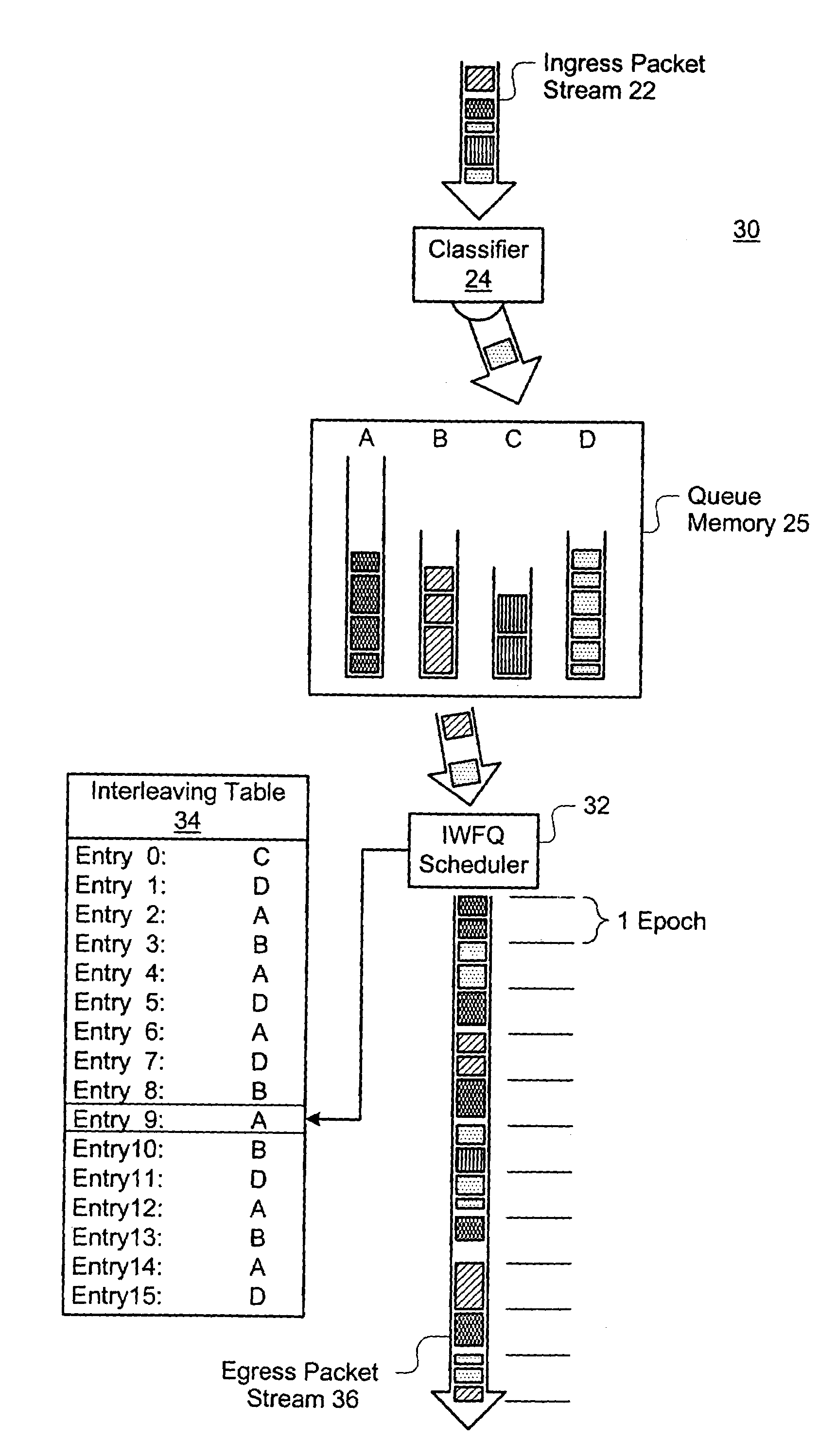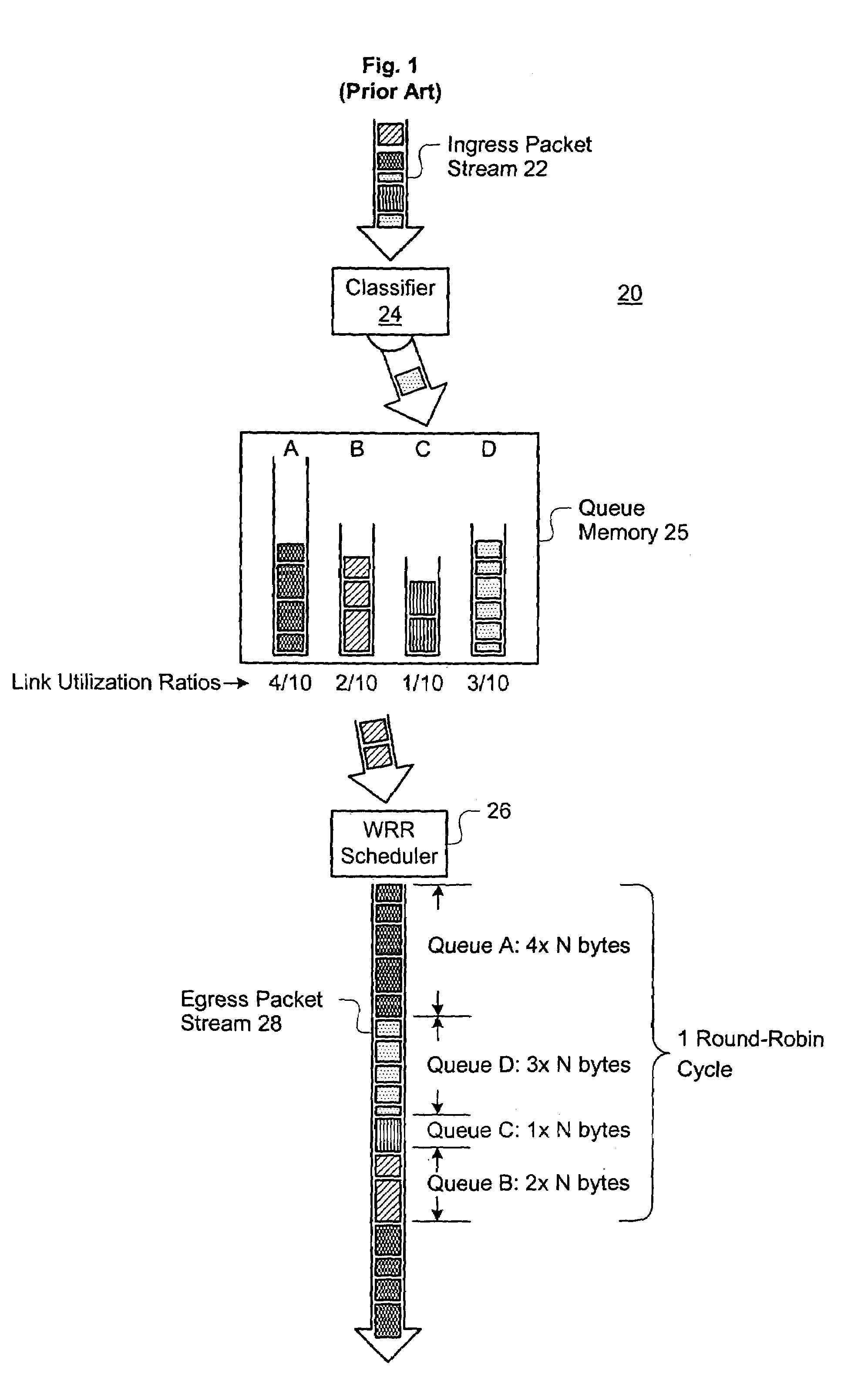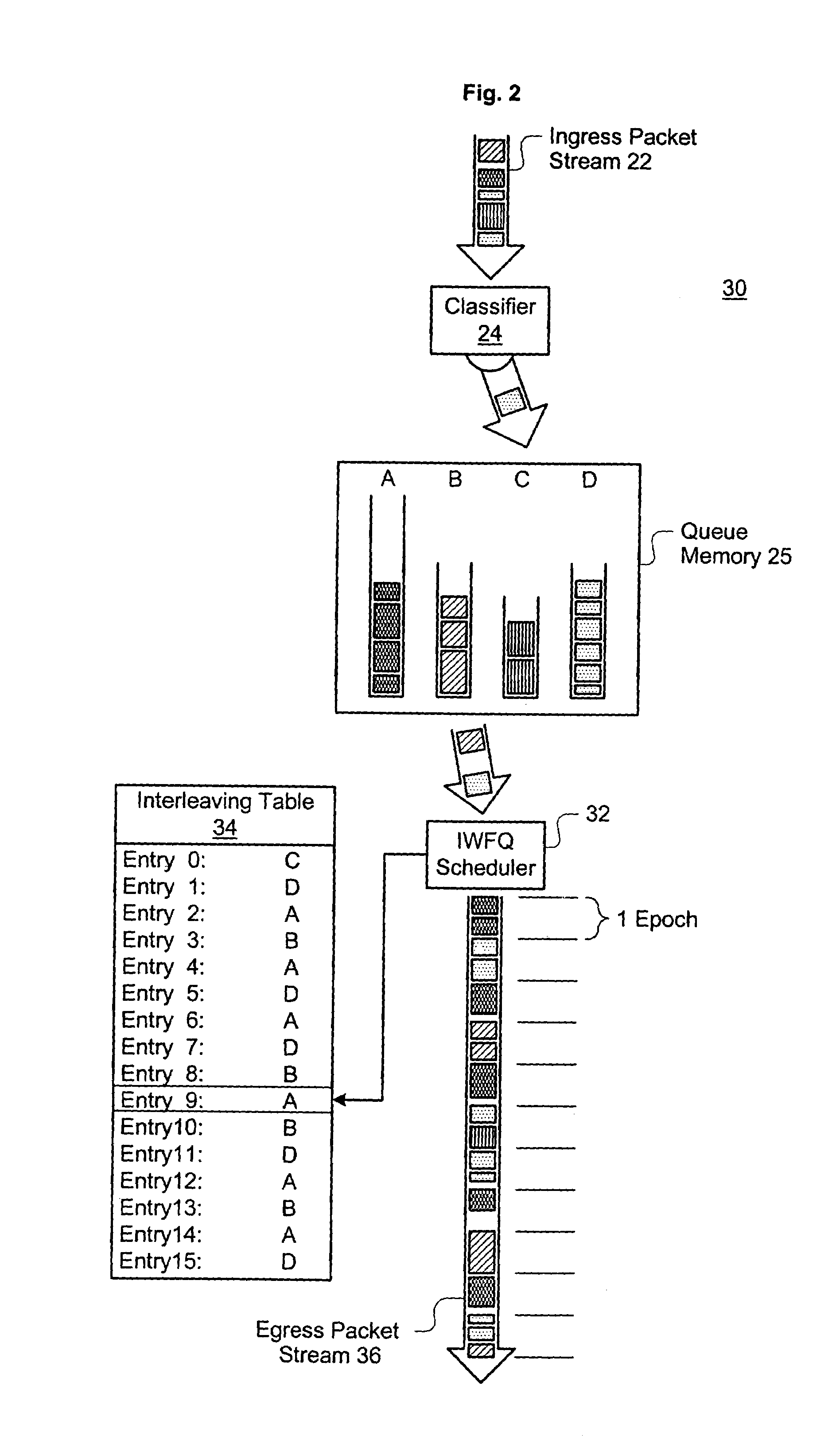Interleaved weighted fair queuing mechanism and system
- Summary
- Abstract
- Description
- Claims
- Application Information
AI Technical Summary
Benefits of technology
Problems solved by technology
Method used
Image
Examples
Embodiment Construction
[0025]Several terms have been assigned particular meanings within the context of this disclosure. As used herein, something that is “programmable” can have its value electronically changed through a computer interface, without requiring manual alteration of a circuit, recompilation of software, etc. A “table” is a data structure having a list of entries, each entry identifiable by a unique key or index and containing a value related to the key and / or several related values. A table requires physical memory, but a table is not limited to any particular physical memory arrangement. As applied to a table, a “pointer” is a value that allows a specific table entry to be identified. An “epoch” is a set unit of time within a device, but an “epoch” need not represent the same unit of time at all points within a single device. “Interleaved” queue sequencing refers to a repeatable queue sequence that intersperses multiple visits to one queue among visits to other queues. A “packet-routing dev...
PUM
 Login to View More
Login to View More Abstract
Description
Claims
Application Information
 Login to View More
Login to View More - R&D
- Intellectual Property
- Life Sciences
- Materials
- Tech Scout
- Unparalleled Data Quality
- Higher Quality Content
- 60% Fewer Hallucinations
Browse by: Latest US Patents, China's latest patents, Technical Efficacy Thesaurus, Application Domain, Technology Topic, Popular Technical Reports.
© 2025 PatSnap. All rights reserved.Legal|Privacy policy|Modern Slavery Act Transparency Statement|Sitemap|About US| Contact US: help@patsnap.com



